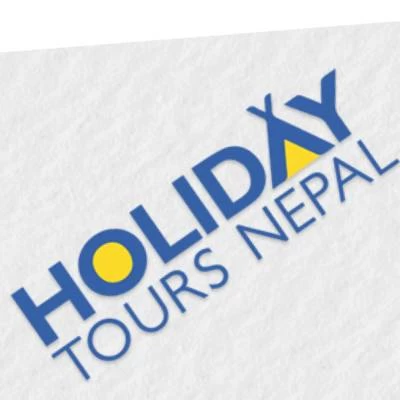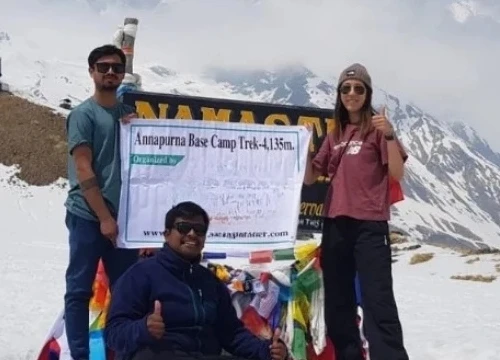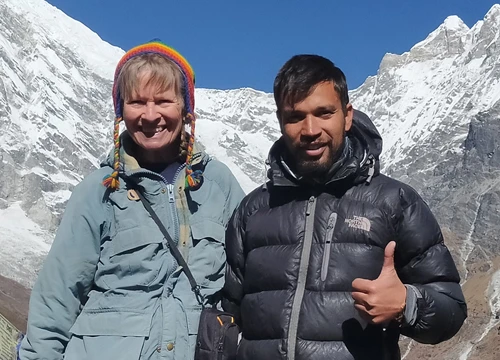Trekking Tips for First-Time Visitors to Nepal
Trekking in Nepal is a unique and rewarding experience but requires preparation and awareness. Whether you're heading to the Everest region, the Annapurna circuit, or any of the beautiful trails in Nepal, following these essential tips will make your journey more enjoyable and safer.
Hire a Guide or Porter
Nepal's trekking routes can be challenging, especially for first-time visitors. Hiring a knowledgeable guide enhances your trekking experience by providing insights into the local culture, traditions, and landscapes and ensuring your safety. Conversely, a porter can carry your heavy load, allowing you to trek comfortably and focus on the breathtaking surroundings rather than exhaustion.
Start Trek Early
Mornings in Nepal are usually straightforward, providing the best visibility for trekking. Starting an early trek allows you to take advantage of the fresh air, avoid afternoon clouds or unexpected weather changes, and complete your daily Trek before nightfall. Also, starting early walks means securing better accommodation in busy teahouses along the trekking routes.
Acclimatization
Altitude sickness is a serious concern when trekking in Nepal, and acclimatization is key to preventing it. Spending extra days at higher altitudes is recommended to let your body adjust to the thinner air. This can significantly reduce the risk of altitude sickness and ensure a more pleasant experience.
Altitude Sickness Prevention
Gradually ascending is crucial. Stay hydrated by drinking plenty of water, eating nutritious meals that provide energy, and avoiding alcohol and smoking, as these can worsen altitude sickness. If you experience dizziness, nausea, or headaches, descend immediately and seek medical help if necessary.
Book with a Reliable Trekking Agency
Choosing a trusted trekking agency, such as Holiday Tours Nepal, ensures you receive well-organized itineraries, experienced guides, and proper safety measures. A professional agency will also assist in securing necessary permits and arranging accommodations.
Choose the Right Trek
Nepal offers various trekking routes, from easy trails to strenuous high-altitude expeditions. If you're a beginner, consider treks like Ghorepani Poon Hill or Langtang Valley. More experienced trekkers might opt for the Everest Base Camp or the Annapurna Circuit. Selecting the right Trek based on your fitness level and interests is crucial for an enjoyable journey.
Consider Trekking Poles
Trekking poles can be a lifesaver, especially on steep ascents and descents. They help distribute weight, provide stability, and reduce strain on your knees, preventing potential injuries during long treks.
Eating and Drinking Habits
Proper nutrition is essential for energy and stamina. Stick to well-cooked, hygienic meals and avoid raw foods. Drink purified or boiled water to prevent stomach issues. Many trekkers rely on water purification tablets or portable filters to ensure safe drinking water.
Hiking in Nepal for Beginners
If this is your first trekking experience, start with a shorter and less strenuous trek. Beginner-friendly options like the Ghorepani Poon Hill trek offer stunning mountain views without extreme altitude challenges, making them ideal for first-time trekkers.
Obtain Necessary Permits
Before starting your Trek, make sure you have the required permits, such as the TIMS (Trekkers' Information Management System) card and national park entry permits. These permits help track trekkers for safety reasons and contribute to the conservation of trekking areas.
Packing Essentials
Pack wisely with necessary clothing, trekking gear, a first aid kit, and personal items. Avoid overpacking, as carrying too much weight can make trekking more difficult. Prioritize lightweight, weather-appropriate clothing and durable footwear.
Planning Your Budget
Trekking in Nepal varies in cost, depending on the route and facilities—budget for trekking permits, guides, porters, food, accommodation, and emergency expenses. Extra cash is advisable, as ATMs may not be available in remote trekking areas.
Accommodation and Food
Most trekking routes in Nepal have teahouses and lodges that provide basic accommodation and meals. Expect simple but hearty meals such as dal bhat, noodle soup, and Tibetan bread. Booking in advance during peak seasons can ensure better lodging.
Cultural Etiquette
Nepal is rich in traditions and cultural values. Respecting local customs, greeting people with "Namaste," and dressing modestly during cultural visits will help you build a good rapport with the locals. Always ask for permission before taking photos of people, especially in rural villages.
Equipment
It is important to Invest in quality trekking gear. A sturdy backpack, a warm sleeping bag, waterproof layers, and appropriate clothing can make a huge difference in your trekking comfort and safety.
Fuel Your Body Well
Trekking in high altitudes requires high energy levels. Eating carbohydrate-rich meals like dal bhat, soups, and snacks will provide the necessary stamina to complete your Trek. Carrying energy bars and dry fruits is also a great way to refuel during long hikes.
Physical Training
Preparing for a trek with physical exercises such as cardio, endurance training, and strength workouts can improve your stamina. Before your Nepal trek, regular hikes will help condition your body for longer walks.
Remember to Pace Yourself
Walking comfortably is crucial to avoid exhaustion. Taking short breaks, listening to your body, and not rushing through the Trek will ensure a more enjoyable experience.
Respect the Local Culture
Nepalese culture is deeply rooted in religious and social traditions. Being mindful of these customs, such as removing shoes before entering temples and not touching holy objects with your feet, is important for cultural appreciation.
Responsible Trekking
Eco-friendly trekking practices should be followed at all times. Avoid littering, use reusable water bottles, and follow "leave no trace" principles to preserve Nepal's natural beauty for future trekkers.
Proper Footwear
Wearing well-fitted trekking boots with good grip and ankle support can prevent injuries and discomfort. Breaking in your shoes before the Trek is essential to avoid blisters and soreness.
TIMS Card
Obtaining a TIMS card before trekking is mandatory for most trekking routes in Nepal. This helps ensure your safety by tracking trekkers in case of emergencies.
Travel Insurance
It is highly recommended that you get travel insurance that covers high-altitude trekking, medical emergencies, and helicopter evacuation if needed. Travel insurance ensures peace of mind in case of unforeseen situations.
Understand the Terrain
Nepal's trekking trails vary from lush forests to steep rocky paths. Knowing what to expect and preparing according to the terrain can help you manage your Trek better. Always stay aware of your surroundings and be cautious on difficult sections of the trail.
By following these tips, first-time trekkers can have a safe, enjoyable, and memorable experience in Nepal. Let Holiday Tours Nepal assist you in creating an unforgettable adventure in the Himalayas!







